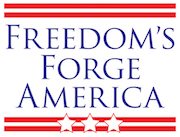Ship-Board Visit To The Panama Canal
My wife and I recently had the opportunity to experience the Panama Canal (the first half of it) via the Holland America Line’s ship, “Eurodam,” along with the 2,000 other passengers on-board. It was interesting watching the water rising and falling within the individual lock sections in view, with ships of all sizes traveling in both directions, side by side (including one observed expensive personal pleasure craft) making the transit.
Cruise and cargo size ships have very little clearance between the sides of the ships and the walls of the locks. To keep transiting ships moving freely thru, they are guided by two-to-four powerful small engines (called “mules”) running on a continuous single rail, on both sides, each connected by cables (ship to engine) to help guide these huge ships safely and continuously thru each successive lock until finally reaching one ocean or the other.
It’s said that it can take 8-10 hours to make the trip all the way through from one ocean to the next. Our cruise ship went half-way to a large lake located in the middle of the canal, before turning around and entering the locks bringing us back to the Atlantic. Some cruise trips take passengers all the way through to the Pacific, but then you debark in San Diego. The flight from there back to Fort Lauderdale did not excite me, preferring to simply return to our embarkation point in Florida via our ship (we live in Savannah)!
Some brief particulars about the Canal. Construction was originally started by the French in 1881. Their efforts reportedly failed by 1889 (dangerous working conditions, in addition to mosquitoes and malaria). Taken over by America (President Teddy Roosevelt) in 1904, with final completion, then, in 1914. Combined construction (French + American) resulted in over 25,000 fatalities by the time the Canal was officially opened. In the late 1970’s, President Jimmy Carter (now, as you know, under announced hospice care) negotiated the treaty that would turn all control of the Canal and the Canal Zone over to the Nation of Panama. The hand-over took place officially on December 31, 1999.
More than 13,000 ships make the trip through the Canal annually, with an average of more than 35 vessels per day (it is a 24/7 operation). The tolls vary by size of ship. Reportedly cruise-ship size vessels can run in the $400,000 range per complete transit. Panama generates an estimated $1.8-billion per year from Canal operations, no doubt a significant addition to that nation’s revenues.
All in all, it was an interesting experience to actually be on-board a ship as it slowly rose and descended through the changing water levels of the various locks. Well worth the trip for its historic and modern-day supply-chain significance. As a part of an overall cruise experience within the region, very likely to be the highlight, I’d recommend it.

